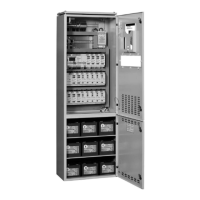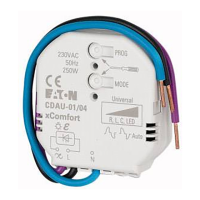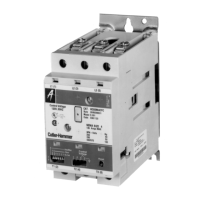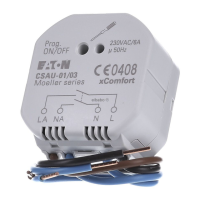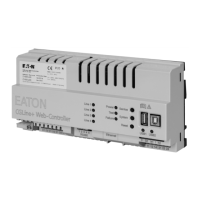57
Technical data
Mounting and Operating Instructions CEAG Central Battery System ZB-S 40071860179 (L) November 2018 www.ceag.de
4.4.15 Bus-Technology according to RS 485
or CG-S-Bus
An RS485 bus is used for data communication with
external bus modules (3-PM-IO Module or TLS).
A connection to a BMS can be done with the CG-S bus.
The conductors of the RS485 bus line must be connected
to the connection points RS485 A, RS485 B, +24V OUT
and -24V OUT of the ZB-S connection terminals.
NOTE
A parallel switching of data cables is not allowed and
does not lead to an extension of the acceptable cable
length.
For power supply of the modules conductors within one
screening can be switched in parallel (for calculation
compare the catalogue of the system ZB-S).
ATTENTION!
Bus Topology: linear, double terminated (no spur lines
allowed). The absolutely essential terminating resistors are
included in the control cabinet.
Cable type (minimum requirement): IY(ST)Y 4 x 2 x 0.8 mm
(Twistet Pair, screened) – the screen of the cables must be
connected to the SE-clamps of each module and it is allowed
to be earthed in the control cabinet ZB-S.
The conductor cross-section needed for the 24V bus voltage
will depend on the line length and the number of bus modules
(U
min
= 19 V DC, refer to the operationg instructions for the
3-PM-IO Module and TLS-Bus-Module)
Only one pair of conductors is allowed to be used as data line
within the screen - it is not acceptable to bundle several data
cables within one screened cable!
The RS485 bus is not designed as a SELV system. The bus
components must be handled as if mains supply (240 V) is
applied.
CG-S-Bus
RS485-Bus
CEAG 3-PM-IO 1

